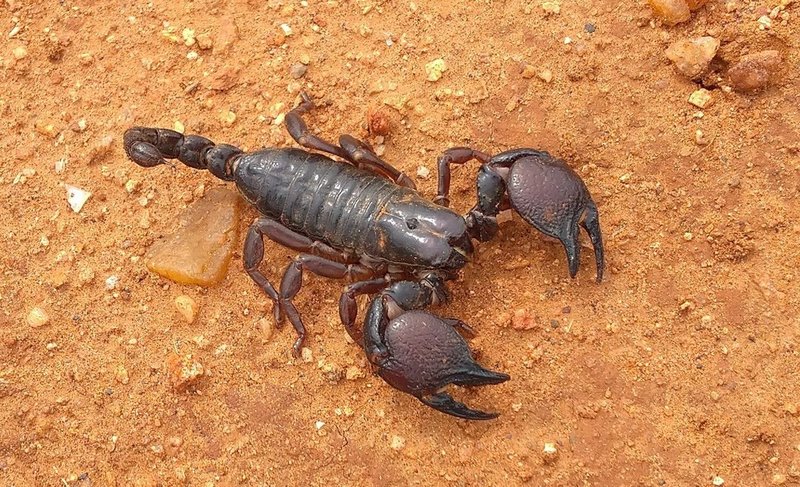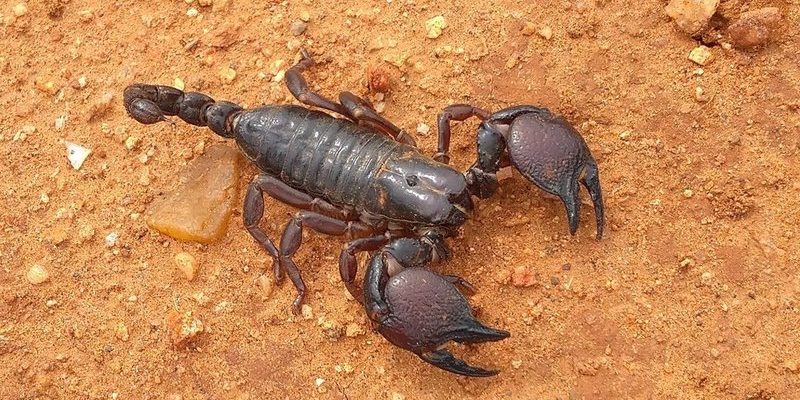
If you’re curious about how to identify a Red Claw Scorpion, you’re in the right place. We’ll explore their unique features, habit preferences, and even what to avoid if you come across one in nature. By the end, you’ll be equipped with the knowledge to recognize this impressive arachnid with confidence.
What Does a Red Claw Scorpion Look Like?
Identifying a Red Claw Scorpion starts with understanding its physical characteristics. Generally, these scorpions are medium-sized, reaching lengths of about 3 to 4 inches. Their most striking feature is, you guessed it, their bright red claws. Think of them as nature’s own version of a well-dressed individual, grabbing attention with their flashy accessories.
Their bodies are usually a dark brown with a flat and elongated structure. This coloration helps them blend into their environment, like a sleek sports car lurking in a shadowy alley. You might also notice their segmented tails, which curl over their backs, ready to defend themselves if necessary. The pincers are notably larger compared to other scorpions, making them both a beautiful and intimidating sight.
Habitat and Distribution
Red Claw Scorpions are native to a variety of environments, primarily found in Australia. They thrive in arid and semi-arid regions, favoring sandy or rocky areas where they can hide during the day. You might think of them as desert dwellers, enjoying the warm embrace of the sun while seeking shelter in burrows or under rocks during the sweltering daytime heat.
Interestingly, these scorpions are often found in bushland or open forest areas, where they can blend in seamlessly with their surroundings. If you’re wandering through a bush trail and spot a dark shape against the sandy soil, there’s a good chance it could be a Red Claw Scorpion resting peacefully. Just remember to keep your distance—admiring from afar is always wise!
Behavior and Diet
Understanding the behavior of the Red Claw Scorpion can greatly help you identify them. They are primarily nocturnal, meaning they come out in the night to hunt for food. Imagine them as little night owls, creeping about stealthily in search of insects, spiders, and other small invertebrates to feast on.
Their predatory skills are impressive. With those strong pincers, they catch and immobilize their prey before delivering a venomous sting. But here’s the kicker: their venom is not dangerous to humans. In fact, it’s often more of a “soft sting,” similar to a bee sting. However, you still wouldn’t want to test that theory! So, if you spot one on a night hike, just marvel at its hunting prowess from a safe distance.
How to Safely Observe a Red Claw Scorpion
If you’re lucky enough to find a Red Claw Scorpion in the wild, it’s critical to observe safely. First, keep a respectful distance. Scorpions might seem small, but they can defend themselves if they feel threatened. If you’re fascinated and want to take a closer look, consider using a camera with a zoom feature. This way, you can appreciate their intricate details without becoming a target!
Another suggestion is to bring a flashlight when exploring during the night. Their dark bodies may blend into the environment, but shining a light will help you spot them more easily. Just remember, if you see one, don’t poke or prod—it’s best to let them go about their business undisturbed.
Why Identifying the Red Claw Scorpion Matters
So, why should you care about identifying this specific scorpion? Understanding different species in the wild plays a crucial part in conservation and education. The more we know about creatures like the Red Claw Scorpion, the better we can advocate for their habitats and protect the ecosystems they belong to.
Beyond conservation, identifying scorpions can help reduce fear and misconceptions about them. Many people think all scorpions are dangerous, but learning about their unique characteristics can shift that perception. Plus, spotting one in the wild can be a memorable experience, connecting you to nature in a whole new way!
Common Misidentifications
Sometimes, people confuse the Red Claw Scorpion with other scorpion species. For example, the Blackrock Scorpion (Urodacus manicatus) might catch your eye due to its similar size and shape. Both species exhibit similar behaviors, but the Red Claw Scorpion can be distinguished by its vibrant red pincers.
Another creature commonly mistaken for a scorpion is the whip scorpion. They may look similar at first glance, but whip scorpions lack the traditional pincers and sting of a true scorpion. Instead, they have long, whip-like tails. Knowing these differences can help you avoid confusion, ensuring you recognize the true Red Claw Scorpion when you see it.
By now, you’ve learned quite a bit about how to identify the Red Claw Scorpion. From its vibrant red claws to its nocturnal habits, recognizing this fascinating arachnid can enrich your outdoor experiences. Whether you’re hiking in Australia’s bushland or simply enjoying a nature documentary, you’ll be equipped to spot and appreciate this unique creature.
So next time you’re outside and feel a bit adventurous, keep an eye out for these scorpions. Respect their space, enjoy the thrill of discovery, and celebrate the beauty of nature right in your own backyard. Happy exploring!

